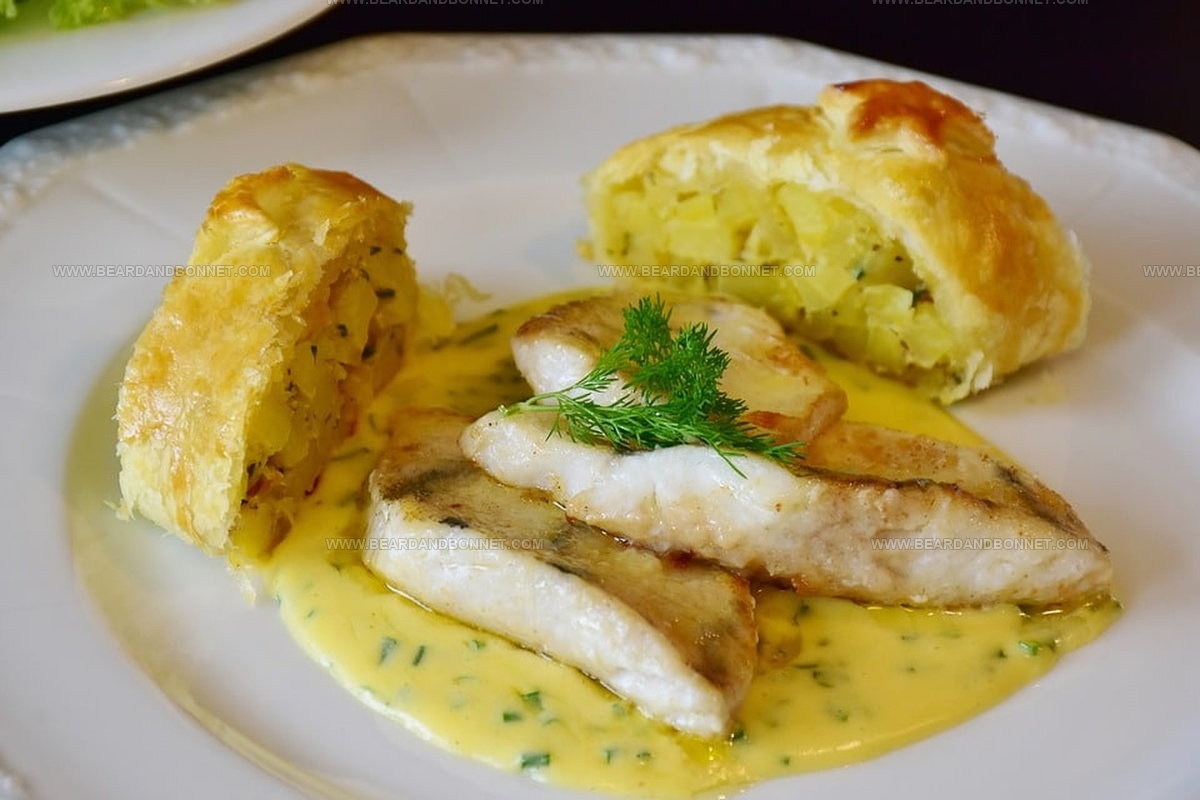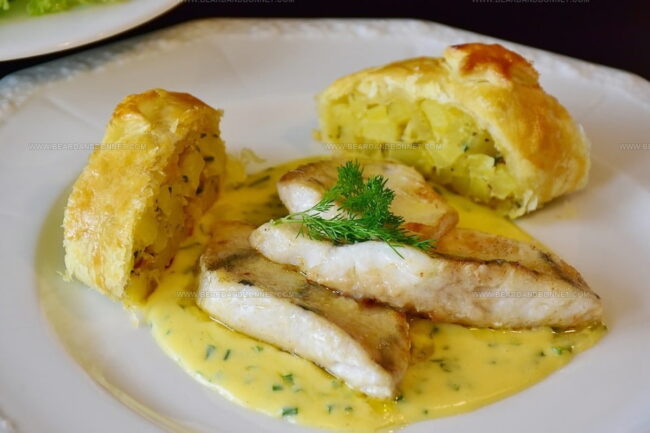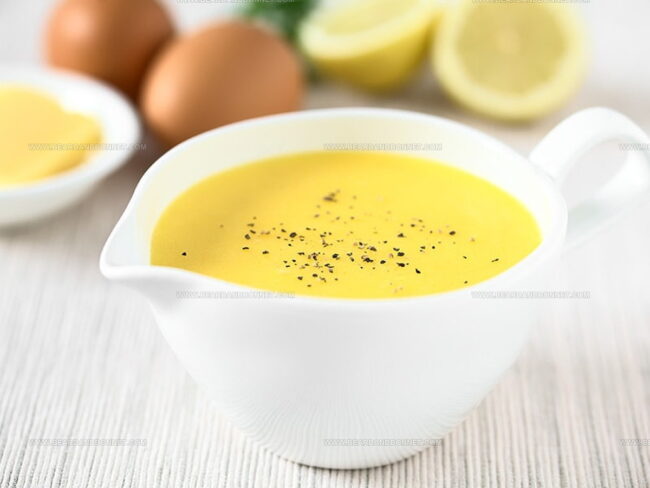What Does Hollandaise Sauce Taste Like? A Buttery Burst of Flavor
Hollandaise sauce, a classic French culinary delight, often sparks curiosity among food enthusiasts and home cooks alike.
This velvety, golden condiment has graced countless breakfast tables and elegant dining experiences with its rich, luxurious presence.
Professional chefs and cooking novices frequently wonder about its unique flavor profile and why it remains a staple in gourmet kitchens worldwide.
Its reputation as a sophisticated sauce stems from its delicate preparation and remarkable ability to elevate simple dishes into extraordinary culinary experiences.
The magic of hollandaise lies not just in its taste but in the complex technique required to create its smooth, buttery texture.
Understanding the nuanced characteristics of this sauce can transform your cooking and dining perspectives, offering insights into the artistry of French cuisine.
Are you ready to unravel the delicious mystery behind hollandaise sauce?
What Is Hollandaise Sauce?
Hollandaise sauce comes from French cooking traditions.
Cooks often pair it with asparagus, eggs Benedict, or spread it over bread for a simple morning meal.
Butter, lemon juice, and egg yolk mix together as key components, with egg yolk helping to make the sauce thick and creamy.
Sauce historians first called this recipe Sauce Signify, naming it after its original homeland in France.
Interesting details about its name come from a small Norman village known for making butter and dairy products.
Somehow, the sauce's title shifted over time, becoming what we know today as Hollandaise sauce.
Taste of Hollandaise Sauce
Hollandaise sauce stands out as a rich blend centered on eggs with an almost creamy and buttery taste.
Different styles can range from tangy to sweet, with multiple variations based on added ingredients.
Sauce makers create its mayonnaise-like quality through similar preparation methods used when making traditional mayonnaise.
Butter gives Hollandaise sauce an opulent and smooth flavor with subtle hints of hazelnut.
Strong egg notes shine through clearly.
Compared to mayonnaise, this sauce offers a more luxurious texture with sharp lemon undertones and a mild acidic kick.
Hollandaise sauce brings exceptional depth to simple dishes.
Butter and eggs combine to create an incredibly sumptuous taste that elevates basic poached eggs.
Lemon provides a bright citrus note and gentle sourness.
Some chefs enhance the sauce by mixing in extra spices like black pepper or hot sauce for additional complexity.
Flavor Variations of Hollandaise
Hollandaise sauce is easy to customize with different flavors to match a variety of dishes:
Experimenting with these simple add-ins lets you match hollandaise to the flavors of your meal, making it even more versatile and delicious.
Ways To Use Hollandaise Sauce
Hollandaise sauce is a creamy, tangy addition that can make simple dishes taste extra special:
You can even use hollandaise as a dip for bread, roasted veggies, or potato wedges, making every bite a little more special.
How to Make Hollandaise Sauce
Making Hollandaise sauce starts with whisking egg yolks and lemon juice or vinegar in a mixing dish until the mixture looks frothy and thick.
Careful cooking on the stove top over medium heat prevents burning.
Cooks might add another egg yolk for an extra-rich sauce.
Butter goes into the mix one tablespoon at a time, always off the heat.
Each addition needs thorough mixing before adding the next spoonful.
Smart sauce makers follow a key ratio: three times more liquid components compared to butter.
Calculations include whole eggs plus lemon juice or vinegar for every six tablespoons of butter.
After butter blends completely, simmering for 1 to 2 minutes helps thicken the sauce.
Crafting perfect Hollandaise requires patience and about 10 minutes of total cooking time.
Sauce makers can adjust the basic formula to match personal tastes or kitchen needs.
Swapping ingredients works well: replace vinegar with lemon juice, use half egg yolks, experiment with blender or food processor methods, and create your signature sauce.
Can You Buy Hollandaise Sauce?
Learning to make hollandaise sauce might seem scary at first.
Making this delicate sauce requires careful skill and close attention, but you won't find it waiting on supermarket shelves.
Hollandaise has a reputation as a special occasion sauce because many believe it's complicated to create at home, which makes restaurant versions more tempting than they should be.
Homemade hollandaise beats store versions because commercial options lack the rich, creamy texture from fresh egg yolks and butter.
Brands like McCormick and Knorr sell bottled versions, but shoppers should check packaging carefully since not all containers show clear expiration dates.
Most grocery stores stock this sauce, and online sellers offer additional purchasing options for home cooks and restaurants.
Restaurant suppliers and online marketplaces like eBay provide wholesale quantities for chefs and sauce enthusiasts who want bulk hollandaise ingredients.
Storing Hollandaise Sauce
To keep hollandaise sauce fresh, it’s best to make only what you plan to use right away.
If you need to store extra, let the sauce cool, then split it into small portions.
Place these in airtight containers or plastic freezer bags.
Store in the freezer for up to a month.
Don’t forget, this sauce is delicate and doesn’t last long, so only freeze small batches and always reheat gently to keep the texture smooth.
Is Hollandaise Like Mayonnaise?
Lemon, vegetable oil, and egg yolk come together to create mayonnaise, while vinegar, fresh butter, and egg yolk form Hollandaise sauce.
Egg yolk remains a common ingredient in both sauces.
Their key distinction lies in serving temperature: mayonnaise sits cool and refreshing, and Hollandaise arrives warm and rich.
Is Hollandaise Sauce Bad for You?
Eating Hollandaise sauce might pose some health risks.
Raw egg yolks in the sauce could lead to Salmonella infection.
Standard Hollandaise sauce typically includes egg yolks, butter, salt, and cream as key components.
Classic French cooking recognizes five key sauces: bechamel sauce, veloute sauce, brown or Espagnole sauce, Hollandaise sauce, and tomato sauce.
Bechamel sauce stands out as the most frequently used among these.




Jessica Martin
Recipe Developer & Food Writer
Expertise
Recipe Development, Food Styling and Photography, Seasonal and Local Ingredients, Vegetarian and Vegan Cuisine, Culinary Education
Education
Portland Community College
Oregon Culinary Institute
Jessica Martin is a talented food writer and recipe creator who specializes in seasonal cooking and approachable home baking.
Educated at Portland Community College with additional pastry training from Oregon Culinary Institute, Jessica’s culinary journey spans nearly a decade of creating and sharing flavorful recipes.
Her deep appreciation for local ingredients shapes each of her recipes, making them both accessible and inspiring. At Beard and Bonnet, Jessica uses her cheerful, down-to-earth writing to help readers effortlessly bring new tastes and creative dishes into their daily routines.